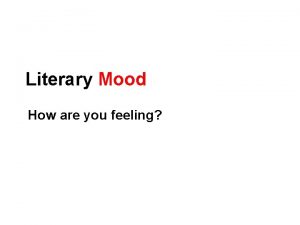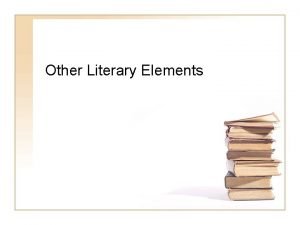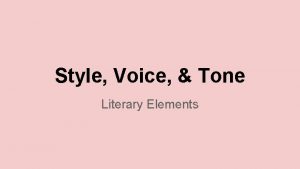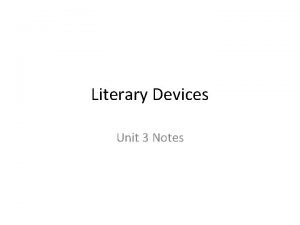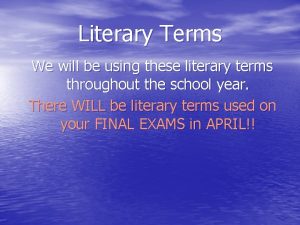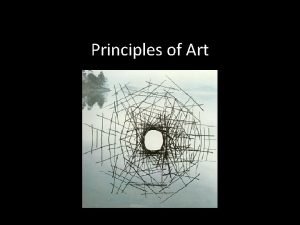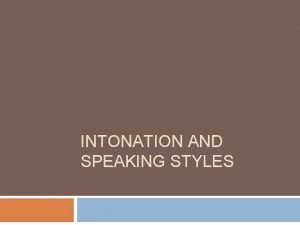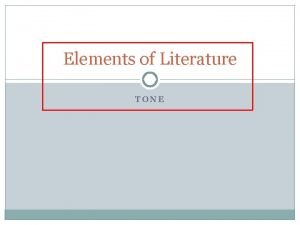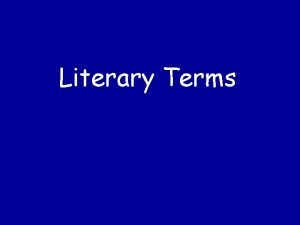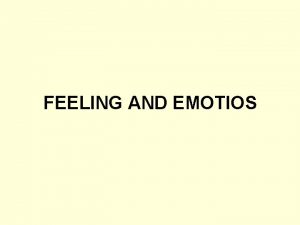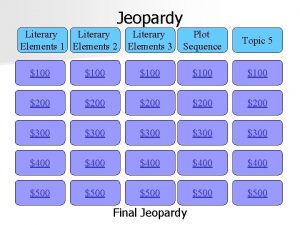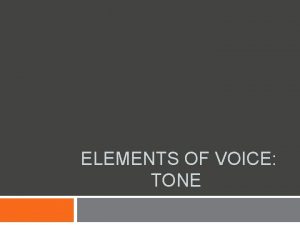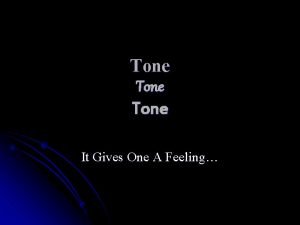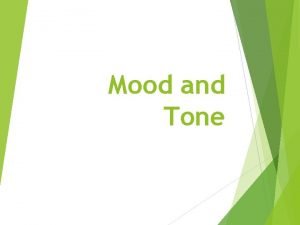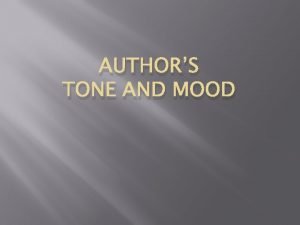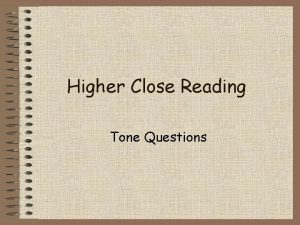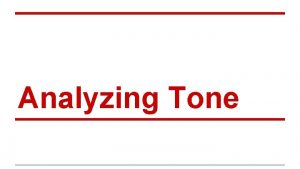Other Literary Elements Tone The overall feeling or












- Slides: 12

Other Literary Elements

Tone • The overall feeling, or attitude, the writer takes towards the subject • Examples: serious, humorous, sarcastic, arrogant, formal, tender, nostalgic – What is the tone of the following passage? "Charlie surveyed the classroom of dolts, congratulating himself for snatching the higher test grade, the smug smirk on his face growing brighter and brighter as he confirmed the inferiority of his peers. "

Imagery • The use of words to create certain pictures in the reader’s mind – Usually based on sensory details – Note the imagery in the following passage: • “A hot wind was blowing around my head, the strands of my hair lifting and swirling in it, like ink spilled in water. ” from The Blind Assassin by Margaret Atwood pg. 1

Allusion • A reference to a familiar person, place, thing, or event • Note the allusion in the following poem:

Example of Allusion – Nothing Gold Can Stay • By Robert Frost Nature’s first green is gold, Her hardest hue to hold. Her early leaf’s a flower; But only so an hour. Then leaf subsides to leaf. So Eden sank to grief, So dawn goes down to day. Nothing gold can stay.

Figurative Language • Metaphor – A comparison of two unlike things by stating that one is the other (no “like” or “as”)

Figurative Language • Simile – A comparison of two unlike things using the words “like” or “as”

Figurative Language • Personification – An animal, object or idea is described as if it were a person • Note the personification in the following poem:

Example of Personification “The Sky is Low” By Emily Dickinson The sky is low, the clouds are mean, A travelling flake of snow Across a barn or through a rut Debates if it will go. A narrow wind complains all day How some one treated him; Nature, like us, is sometimes caught Without her diadem.

Irony • Dramatic Irony – The reader or audience knows something that at least one of the characters does not • Situational Irony – Something other than what is expected happens • Verbal Irony – Saying one thing but meaning another

• Style – How the author uses words, phrases and sentences to form his or her ideas • Symbol – A person, place, thing or event used to represent something else

Theme • A universal truth that applies to the world outside of the text • Clues to finding theme: – Major ideas, topics, or symbols. Also, look for repeated words. – What the characters do and say that relates to the topics or symbols. – What characters learn about themselves, others, or life in general. • Then, come up with a statement of the author’s point or message about the topic. Don’t make the mistake of confusing the story’s topic with its theme. The topic is what the story is about. The theme is the point the author wants to make about the topic.
 Mood words literature
Mood words literature Literary elements tone
Literary elements tone Style in literature
Style in literature Tone literary device example
Tone literary device example Literary devices definition
Literary devices definition The feeling created in a reader by a literary work
The feeling created in a reader by a literary work Way of combining elements to add a feeling of equilibrium
Way of combining elements to add a feeling of equilibrium Impersonal tone in writing
Impersonal tone in writing Formal vs informal writing
Formal vs informal writing Falling intonation
Falling intonation Other initiated other repair
Other initiated other repair Tone definition in literature
Tone definition in literature Tone rhetorical device
Tone rhetorical device
